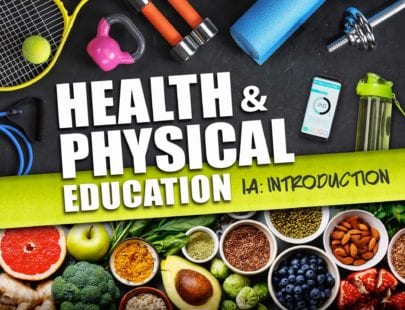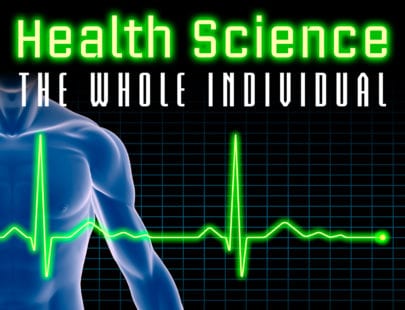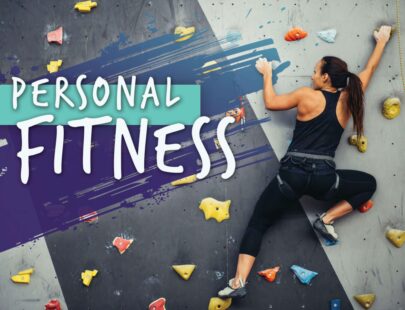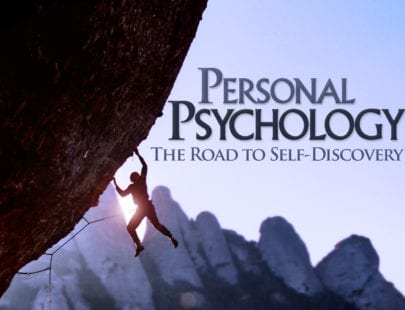
Nutrition & Wellness
To keep our body and our mind running like finely tuned machines, we need to use the right fuel. For humans, that means nourishing our bodies with the right foods. In this course, you’ll explore how food affects essential aspects of your life from your weight to how you age to how well you think. You’ll also examine how outside influences- family, peers, and the media- can affect your diet and your perception of food and how to set yourself up for nutritional success. Are you interested in a career in holistic wellness? Start your health journey now with Nutrition and Wellness.
Units at a Glance
Unit 1: Health, Nutrition, and Wellness
We live in a wellness-obsessed world, but what in the world is wellness? Figuring that out—and linking it to nutrition and health—can help us get on the road toward healthier behaviors. Learning what the different nutrients do in the body and how to balance our energy intake with our energy output can give us some basic guidelines on nutrition and wellness. Here, we’ll uncover the meaning of BMI and understand how an ectomorph is different from a mesomorph, all while learning about healthy eating and lifestyle for a long and healthy life!
What will you learn in this unit?
- Differentiate among the terms nutrition, wellness, health care, health status, and healthy behavior
- Formulate an eating and exercise plan that uses the concept of energy balance
- Assess your body fat composition using the BMI
- Compare the nutritional needs of ordinary people versus athletes, and the different types of physique including ectomorphs, endomorphs, and mesomorphs
- Analyze lifestyle factors that influence wellness throughout the lifespan
Unit 2: Managing Your Food, Nutrition, and Health
Just the facts. That is what you see on nutrition labels on food at the store, but learning what they mean will give you a whole new way to feed and understand your body. With so much information everywhere about nutrition, here you will learn how to zero in on and find the most reliable info for your health. Once you have the data, you’ll be ready to do something with it by taking charge of your own health, setting goals, and figuring out how to make responsible decisions that will keep you healthy for your whole life.
What will you learn in this unit?
- Apply information from Nutrition Facts labels to track your nutrient intake
- Formulate a more accurate self-awareness to support your health choices
- Investigate the links between self-management and responsible decision-making
- Develop and utilize an organized decision-making process for your health behaviors
Unit 3: You Are What You Eat: Healthy Meal Planning
While we want to do what is best for our health, sometimes it’s difficult to know where to start. Here, we’ll arm you with more details about exercise and nutritional recommendations so you’ll be ready to start planning your health make-over! Starting with your current habits, you can plot a slow transition to healthier living and eating in the long run. As studies have shown that people who eat more meals at home tend to align more closely with dietary recommendations than those who eat out frequently, we’ll also explore how to do more of your own meal prep – from the planning stages to a trip to the grocery store, budgets, time constraints and navigating recipes, we’ll set you on track to make healthier eating a reality.
What will you learn in this unit?
- Construct an exercise plan that includes the four basic types of exercise
- Compare your current eating and health behaviors to those recommended by MyPlate and government agencies
- Analyze recipes for their completeness and nutrient content
- Formulate a meal plan that considers your budget, time-management, food preferences, and nutritional needs
Unit 4: Outside Influences
Genes and environment have a significant impact on your healthy eating behaviors. Friends can also play a role in what we choose to eat, but more importantly, they have the potential to influence the risks we take with our health. Speaking of friends, the social determinants of health, including economic stability, neighborhood, presence of social support, and access to health care likewise play a part in our longer-term health outcomes. But no matter your personal circumstances, you can always improve your health behaviors, paving the way for a happier life today and in the future.
What will you learn in this unit?
- Connect genetic inheritance and family context to your health behaviors and risk factors
- Differentiate between peer pressure and groupthink as decision-making influences
- Analyze the social determinants of health to assess risks for health problems and poor health outcomes
- Judge the reliability of health information on websites, in advertisements, and on social media
Unit 5: Considering Food Safety
How have humans throughout history kept food from spoiling? There are many ways for food to go bad and become dangerous to consume, and food poisoning can be not just unpleasant but lethal! However, it turns out that many of the tricks used to preserve food during ancient times are the same principles that modern commercial food producers use to keep our food supply safe from dangerous pathogens. Plus, those same methods for keeping food safe can be applied to your food preparation by keeping everything clean, separate, heated, and chilled according to the “magic” formula!
What will you learn in this unit?
- Investigate how ancient methods of keeping food fresh have evolved into foods that we see on grocery store shelves today
- Connect the conditions that cause food spoilage to ways that food in your environment is vulnerable to contamination
- Differentiate the types of safety and sanitation procedures used by the commercial food production industry
- Apply food science concepts to your own food preparation to keep the food you consume safe from pathogens
Unit 6: Health and Wellness Challenges
Maintaining your health and wellness isn’t always easy – there are sure to be hiccups along the way. For example, do you get enough of the nutrients that your body needs every day? Or, is your relationship with food healthy and one that can be sustained long term? Don’t worry, knowing some of the risks to watch for can go a long way toward keeping you healthy. Plus, if you understand how to navigate peer influences, perceptions of norms, and your own risk factors, you will be much better positioned to avoid many illnesses or injuries. And should you not manage to avoid every pitfall, knowing when to ask for help is key.
What will you learn in this unit?
- Apply the US Dietary Guidelines to determine if you may have a deficiency, inadequacy, or excess of any key nutrients in your diet
- Analyze the causes of weight problems and eating disorders
- Assess the risks of different types of behavior to your health, including injury, sexuality, violence, and substance use
- Formulate a list of possible actions to help teens avoid risk-taking behavior that can have negative consequences
Unit 7: Social & Emotional Health
Nutrition is a crucial component of our wellness, but our social and emotional health play a huge role too. Together, we’ll learn how to build and sustain relationships and how important all the different webs of social connection are for your wellbeing. Then we’ll gather some tips about how to listen, collaborate, and resolve conflict to enhance your skills in relationships. There are positive aspects of stress to tap into, but you need to know how to keep stress from becoming chronic—the kind of stress that can zap your mental and physical health. We’ll tie it all up by considering our roles in life and how family, personal, work, and school life can influence each other but often require finesse to balance.
What will you learn in this unit?
- Analyze your social connections to assess your social engagement
- Formulate strategies for resolving peer conflicts without becoming a bulldozer or a doormat
- Compare productive ways of using stress to negative attitudes about stress, with special attention on ways to prevent chronic stress
- Investigate your own concepts of the meaning of family and work/school to help you balance these two realms of life
Unit 8: Global Health and Wellness
Every day, people in the United States and around the world, suffer from hunger and malnutrition. Many organizations seek to end world hunger, and you too can use your knowledge of nutrition to help the cause, all while practicing your leadership and collaboration skills. Here, we’ll dive into options should you be considering taking your nutrition education to a professional level. From becoming a registered dietitian to a chef, or working with an organization to bring nutritious options to people near or far, the options are endless. Plus, we’ll give you tools to assess your skills, personality, and interests to help you consider what careers may be best for you and how you can contribute both close to home and in your surrounding communities.
What will you learn in this unit?
- Investigate the complex relationships between government initiatives and the food system to explore solutions to hunger
- Apply the FCCLA planning process to personal, community, or worldwide problems to achieve realistic goals
- Cite evidence from a personal career inventory to propose possible career paths related to nutrition and wellness
- Analyze complex problems to identify the root causes, assess possible solutions, take action, and evaluate the outcomes
Required Materials
Physical
- Digital camera (cellphone, tablet, etc.)
- Recipe (either out of book or online)
- Various ingredients
- Cooking utensils and tools
- Stove or oven
- Friend or family member
Software
- Word processing software
Optional
- Presentation software
- Paper
- Construction paper
- Pen or Pencil
- Markers
- Three cereal boxes
- Posterboard
- Report folder
- Printer





